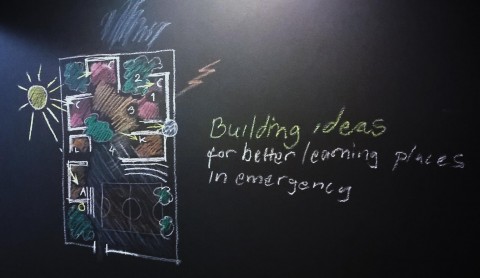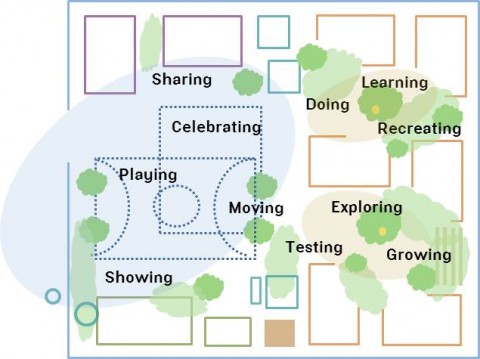Rethinking learning – find an inspiring location
How could I improve the learning environments of children in the difficult places I have visited? This was the question I was asking myself last autumn, sitting in my new room in the new FCA office, looking at the empty walls around my desk. My head seemed to mirror the emptiness, even though I was trying to come up with fancy architectural ideas.
As it happened, FCA education specialist Mary Tangelder came in and inspired me to look for a new angle. Why do the schools in developing countries always look like prisons, she asked, and then directed me on an idea hunt on the internet. She also talked about some wonderful Finnish schools she had visited. My head was no longer empty but buzzing with new ideas.
“Why do the schools in developing countries always look like prisons?”
How could we take notes from awarded Finnish school architecture, which is based on large, open buildings where different spaces meet and offer many different locations for learning and recreation? And how to do that especially when we work under very challenging conditions, with a very tight budget.
I started drawing on the walls and hanging various prints all over. That is my method of processing new ideas and collecting valuable seeds of thought and notable principles. And from all that, I began, little by little, to make out ideas that would combine limited resources and an inspiring school.
A new school focused on learning and inspiring students could include a variety of spaces in classrooms, on big terraces, under a tree in a garden, in a media classroom, on a sports field or a quiet little corner, on a nice bench behind some shrubs. The buildings don’t have to be more expensive than before, they just need to be redesigned. The school grounds can then be transformed together to offer the kind of facilities that Finnish schools have under expensive roofs.
Obviously, an architect cannot design a school on his own; specialists in education are needed for support. We also decided to try out new ideas on a pilot project. That would be an excellent way to introduce our new ideas and principles to local personnel and partners. With meticulous documentation, this kind of a practical example would more easily attract the interest of others as well.
Product development and testing is quite different from our normal work, which meant that a proper time and financial resources had to be found for it. At the same time, FCA was looking for a target to the Suvivirsi Summer Hymn campaign in Cambodia. And behold, there was a place, and probably some funding as well, to test our new school design.
The writer is an architect and a coordinator of school construction at Finn Church Aid.


